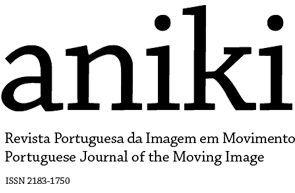Film archives and memory: documents and fictions (deadline: 30th December, 2014)
In the last decades, so called film footage has triggered of increasing interest beyond its usage by specialists and filmmakers. Historians, as well as philosophers and psychologists have discovered in footage material from archives a reason to pursue their reflections on the representation of the past, including memory and trauma.
Yet, even if it could still be considered a fetish, the film footage is now constantly reworked and appropriated. Conventional uses by TV channels with History programs attempt to adapt the images from the past to the standards of the present, but in so doing they run the risk of annihilating its historicity (an error historians call presentism or anachronism). On other occasions, mainly in metalinguistic documentaries, the exploration of footage is carried out by means of editing, zooming and freezing within the narrative flow. Moreover, our civilization tends to fix important events into images to such a degree that a lack of crystallization results in an anxiety akin to the horror vacui. When this occurs, fiction takes over and contributes to the construction of an imaginary that could be considered a document in the future. As Jaimie Baron has recently highlighted, the archive effect is often accompanied by an archive affect.
Perhaps there is no better cluster of images to express this than the one representing extreme events, such as propaganda, counterpropaganda, violence and genocide. In those cases, the images and sounds, or their insufficiency, are put to the test of representation or witnessing, and their place in collective memory.
This special thematic dossier of Aniki aims to address the genealogy of films based on footage, as used for historical o memorial purposes. It also wishes to analyze its circulation, both on a diachronic level (over time) and on a synchronic level (its circulation between different media: photography, film, television, internet...). Thus, it attempts to analyze the consequences of these displacements and rewritings in the public sphere (the reading of the past, the collective memory, the writing of history.
Submitted articles will be selected and subject to a blind peer review process.
Please consult the Author Guidelines, the Section Policies and the Peer Review Process information page before submitting your complete paper.
Vicente Sánchez-Biosca teaches Audiovisual Communication at Universitat de València and was visiting professor in Paris III e Paris I, New York University, Universidade de São Paulo, and others. His most recent books are NO-DO: el tiempo y la memoria (2000), El pasado es el destino. Propaganda y cine del bando nacional en la guerra civil (2011), both with Rafael R. Tranche, Cine de historia, cine de memoria. La representación y sus límites (2006), Cine y guerra civil española: del mito a la memoria (2006). Currently, he is the lead researcher of a project about the role of the image in the construction of the charisma of political leaders in Spain, and of another project about the representation of genocide victims.




